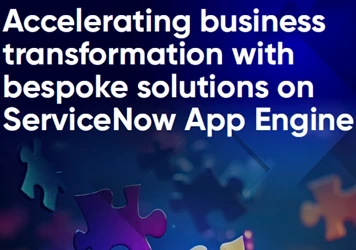To move from brainy atoms (individuals) to brainy molecules (teams) needs the skills of team chemistry, otherwise known as facilitation, sometimes by someone within the team, sometimes by an external agent, if the degree of personal involvement or complexity of the issue demands it.
I once sat in on a session where the facilitator more or less pointed out where the toilets were and mentioned timings for coffee and lunch. This is rather more like the kind of guidance given to you on an aircraft before take-off and gives facilitation a bad name. Equally bad is the type of facilitation I’ve seen within one or two otherwise great companies, where open ended brainstorming sessions are run more like a question and answer session. Simply stated, bad facilitation is not worth having, but good facilitation can transform a situation beyond the simple signposting or didactic brainstorming approaches implied in our examples.
How should we know the difference between effective and less effective facilitation? Well this comes down to how we measure the output of a piece of facilitation. There should be a very high ratio between thoughts and deeds after the intervention and ideally no gap at all between talk and doing, i.e. 100% conversion of decisions taken into purposeful action.
‘Great facilitation leaves no gap between thoughts and deeds’
A great team facilitator will adopt a range of styles that are consistent with the need, shifting shapes in response to the evolving need across the entire spectrum of behavioural styles available to them. I especially like John Heron’s model of intervention styles, since these cover interventions across the spectrum from directive to non-directive and flag the many roles that a great facilitator must cover:
Prescribing (directive)
Essentially a ‘tell’ style. For example: ‘Take these pills and you’ll feel better.’ Prescribing is probably the quickest way to get someone to do something. However, the quickest way is not always the most effective way. We know full well that we don’t always take the doctor’s advice if it does not accord with our own wants, whims and fancies as articulated by the Dunning-Kruger effect, where people of low ability tend to assess their own cognitive abilities as being superior to experts and vice versa. It is perhaps for this reason that the other styles exist, since we are not that great at taking direct advice if it is dissonant with our prevailing paradigm.
Informing (directive)
Neutrally passing on information, ideas and knowledge. For example: ‘I can tell you that your team scored minus 25 on risk taking.’ This gives people the chance to make their own minds up without feeling pressurised or manipulated. Informing does not draw a conclusion. It simply provides neutral information, leaving the recipient to draw their own conclusions and formulate actions. However one then needs a lot of time for team members to process the information provided to them and come up with options and actions to address the need. There is of course always a risk that the information will be processed but no action will result or possibly the ‘wrong’ course of action. Whilst informing may be more effective in the long-term, it requires more time and processing power than prescribing.
Confronting (directive)
Involves challenging viewpoints and requires the examination of motives. For example: ‘You said that you wanted to devise a creative strategy, but I’ve noticed that every time we try to do this you want to talk about what the company is doing about the Christmas meal.’ Confronting should not be confused with aggression – it can be done with a soft pillow as well as a hard edge. Confronting is however one of the more difficult interventions that a facilitator can undertake as it usually results in some level of cognitive dissonance, where people are held to account or get ‘found out’. Done with skill, it can be very effective and relatively quick, but once again the Dunning-Kruger effect applies and people can become actively defensive or, worse still, passively so, which is harder to spot.
Non-directive interventions usually take longer than directive ones. After all they are literally less ‘direct’. However they may be very effective in more troublesome situations. They also require greater levels of skill and sleight of hand techniques to make them work. A great place to study these interventions used is in the TV detective show Columbo, whose titular character rarely confronts his suspects, using a series of much more subtle but clever interventions to smoke the culprits out.
Cathartic (facilitative)
Interventions that enable people to ‘get things off their chest’. For example: ‘Can we spend some time exploring what it feels like for you to lead this project?’ Catharsis can be extremely powerful as a means of allowing people to relive tension about things that are hard to express in more direct terms. One example of this is the use of extended metaphor, where the facilitator asks the team to describe the issue under discussion in metaphorical terms. Sometimes this level of detachment allows people to say hard to say or unsayable things.
Catalytic (facilitative)
Providing a sounding board and helping others to come up with their own solutions. For example: ‘Would you like to explain more about the opportunities for business improvement?’ Catalytic interventions build on the idea of catalysis in chemistry. A catalyst is used in small doses to promote a reaction, but is itself not involved in the actual reaction and remains unchanged at the end of that reaction. It is once again a detached position to take for the facilitator, giving others space to reflect, consider novel ideas and rethink old approaches.
Supporting (facilitative)
Feedback to staff in which they are actively listened to and encouraged in what they are doing. For example: ‘I can understand why you would feel that the company is benefitting from your strategy to encourage innovation from what you have told me.’ Supporting is often of great value when using the more challenging interventions in the facilitator’s toolkit. It provides the essential positive assets in the ‘bank balance’ between the facilitator and the team to draw on when dealing with more challenging elements of the team’s agenda. In general it is always wise to use plenty of pull strategies if you are also pushing for change and a sensible ratio is at least 2:1 pull:push. It is also important to consider the ‘rhythm’ of your interventions. After all, facilitation is like a dance at some level and keeping in step with those you are attempting to engage in the dance of change is important if you are to maintain a high conversion ratio of thoughts into actions.
Read more by this author
Great team facilitators are both well-prepared and also great improvisers to follow lines of enquiry, balancing the need for direction with the need to facilitate thinking and action within teams.
Here are ten starting questions to ponder next time you are called to facilitate a team:
- Why are we doing this in terms of the higher purposes for the team and the enterprise?
- What are the needs of the situation I am working with (outcomes)?
- Who are the people? What are their individual needs in terms of outcomes and the journey towards those outcomes?
- What are the team’s wants as a collective (routes, journeys, environments)?
- How can I design a process that engages with team preferences (wants) without prejudicing the outcomes (needs)?
- What information must be made available to the team before, during or after the intervention?
- What techniques or combinations of techniques are most expedient to have as a starting plan, given the answers to the above questions?
- Where are we planning to meet? What environmental considerations are important in terms of physical or psychological environment?
- How much time is essential in order to do a good job? Is there any implied order or sequence of the issues that must be tackled?
- What facilitation styles do the answers to the above questions demand of me and how best might this be conveyed to the team?
Abridged from Brain Based Enterprises: Harmonising the Head, Heart and Soul of Business





























